
WHAT IS CHAOS?
WHAT IS OUT OF CONTROL?
HOW WE DANCE WITH MODERN SOCIETY?
ROLE: Director/CG Artist/Editor
Recognition
Golden Award of student group, GDC Award
Nomination for Student Short, China Youth Animation Director Support Program
Outstanding Graduation Design of Tsinghua Academy of Fine Arts
Collected by the Tsinghua Academy of Fine Arts
Golden Award of student group, GDC Award
Nomination for Student Short, China Youth Animation Director Support Program
Outstanding Graduation Design of Tsinghua Academy of Fine Arts
Collected by the Tsinghua Academy of Fine Arts
Exhibition Participation
Graduation Song - Fangyuan Art Museum
2022 Asian Digital Art Exhibition - Beijing Times Art Museum
Young Artists Exhibition - City Light Art Center
GDC Design Award 30 Years: A Retrospective of Awarded Works - Shenzhen Guanshan Yue Art Museum
Graduation Song - Fangyuan Art Museum
2022 Asian Digital Art Exhibition - Beijing Times Art Museum
Young Artists Exhibition - City Light Art Center
GDC Design Award 30 Years: A Retrospective of Awarded Works - Shenzhen Guanshan Yue Art Museum
The Edge of Chaos is my graduation design. It served as my fixation during my undergraduate years and took about ten months to complete. It is the most personal creation I have invested my energy and time into since learning 3D design. The work is based on motion capture technology and fractal algorithm. My goal was to construct a stage in the virtual space by means of 3D technology.
This design was born out of raw passions and pathways. My curiosity for chaos theory and fractal graphics, my love for dance and stage, and my confusion about the individual versus the collective in contemporary society, these factors were mixed to catalyze such a work in which figurative dancers and abstract graphics are intertwined



In the winter of 2020, the pandemic made our cold world even harsher. The chaotic nature of human society—and this "always on the edge of the cliff" mentality—became more and more debilitating. When considering this catastrophe, I recall an old Chinese saying: "Public opinion is like water, and people's movement is like smoke.” These words describe the fickleness of people's hearts and the unpredictability of collective behavior.
Prophets and experts always seem able to tell the future of the collective. However, the pandemic caused each individual in the collective to undergo a loss of control. I was in the midst of chaos: unable to see, unable to predict, unable to control. This is the original idea of The Edge of Chaos: the dancer dances with the fractal figure. Chaotically, they interact with one another and echo each other. However, the dancer does not know what form this unknown object will take in response to her movements; and even I, the creator, do not know what form it will take after inputting this parameter.
This is the origin of the title: everything is on the verge of losing control, but has not yet spun into utter chaos.






The vertical narrative structure of the film is quite simple. The dancer slowly looks up in a close-up; the camera enters through the dancer's open mouth (suggesting that it has entered a fantastical, fictional, and non-real space). It begins with a close-up of the dancer's upper body and finally transitions to a scene where the dancer dances with a fractal figure.
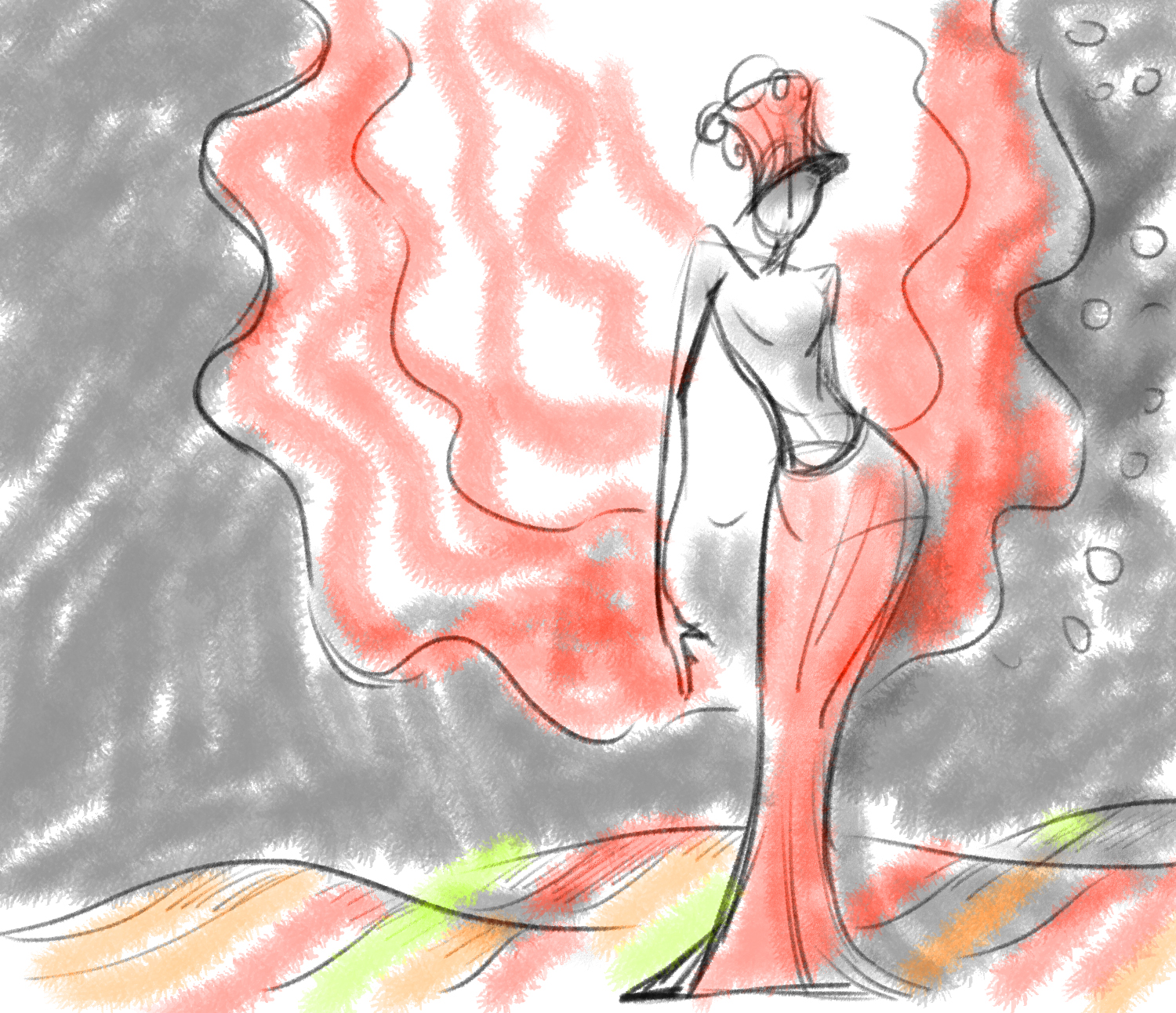

PART1. RED&FLOW

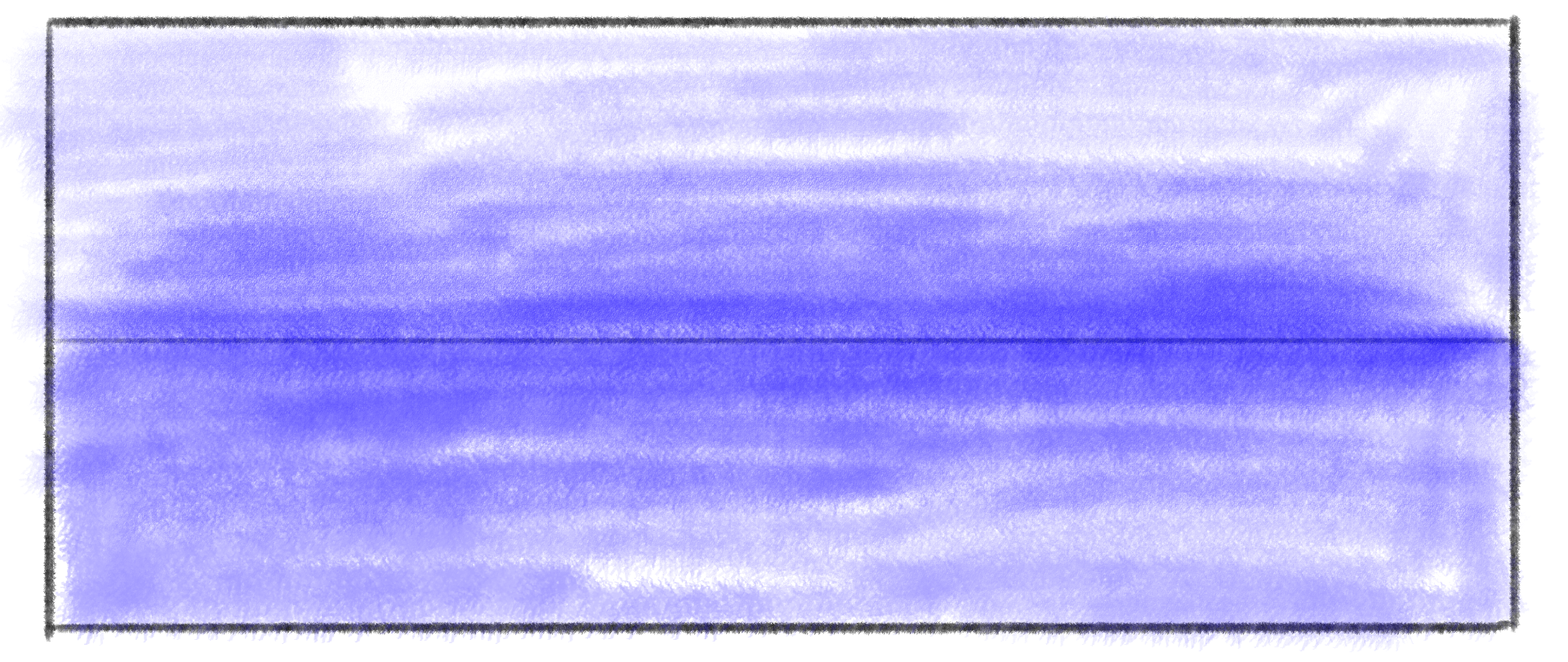
PART2. BLUE&BANLANCE


PART3. WHITE&MISTERY



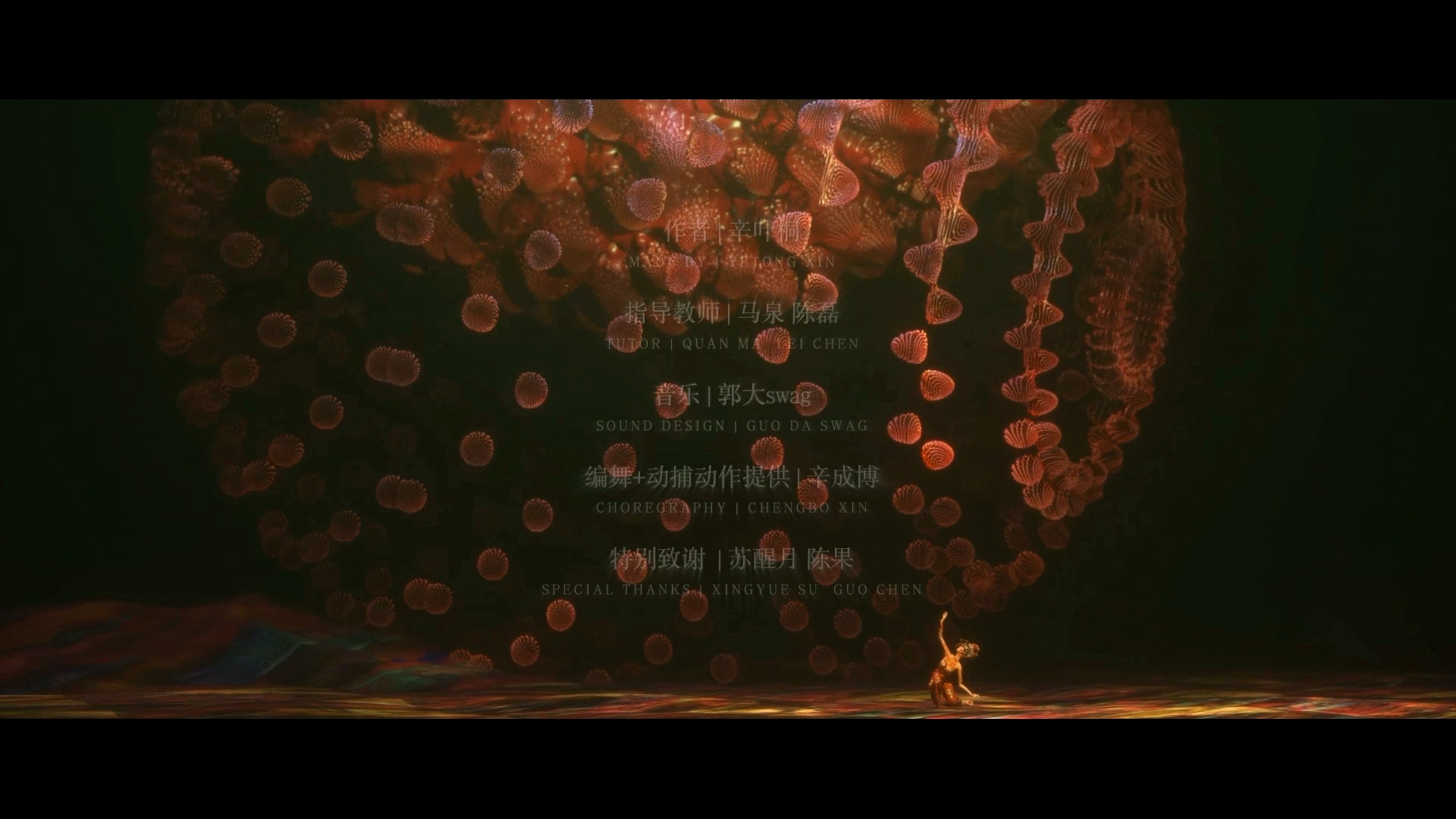

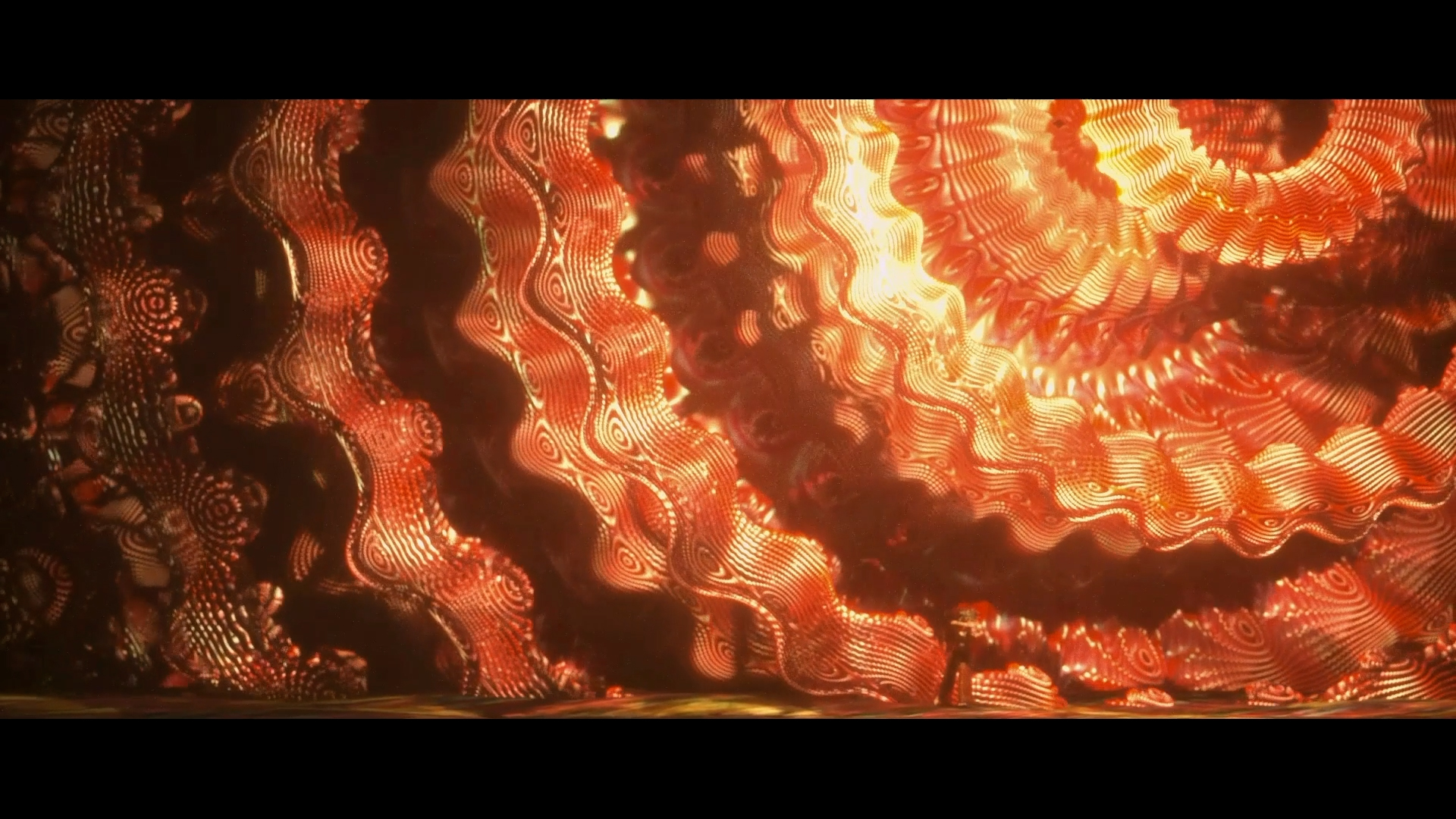
RED&FLOW
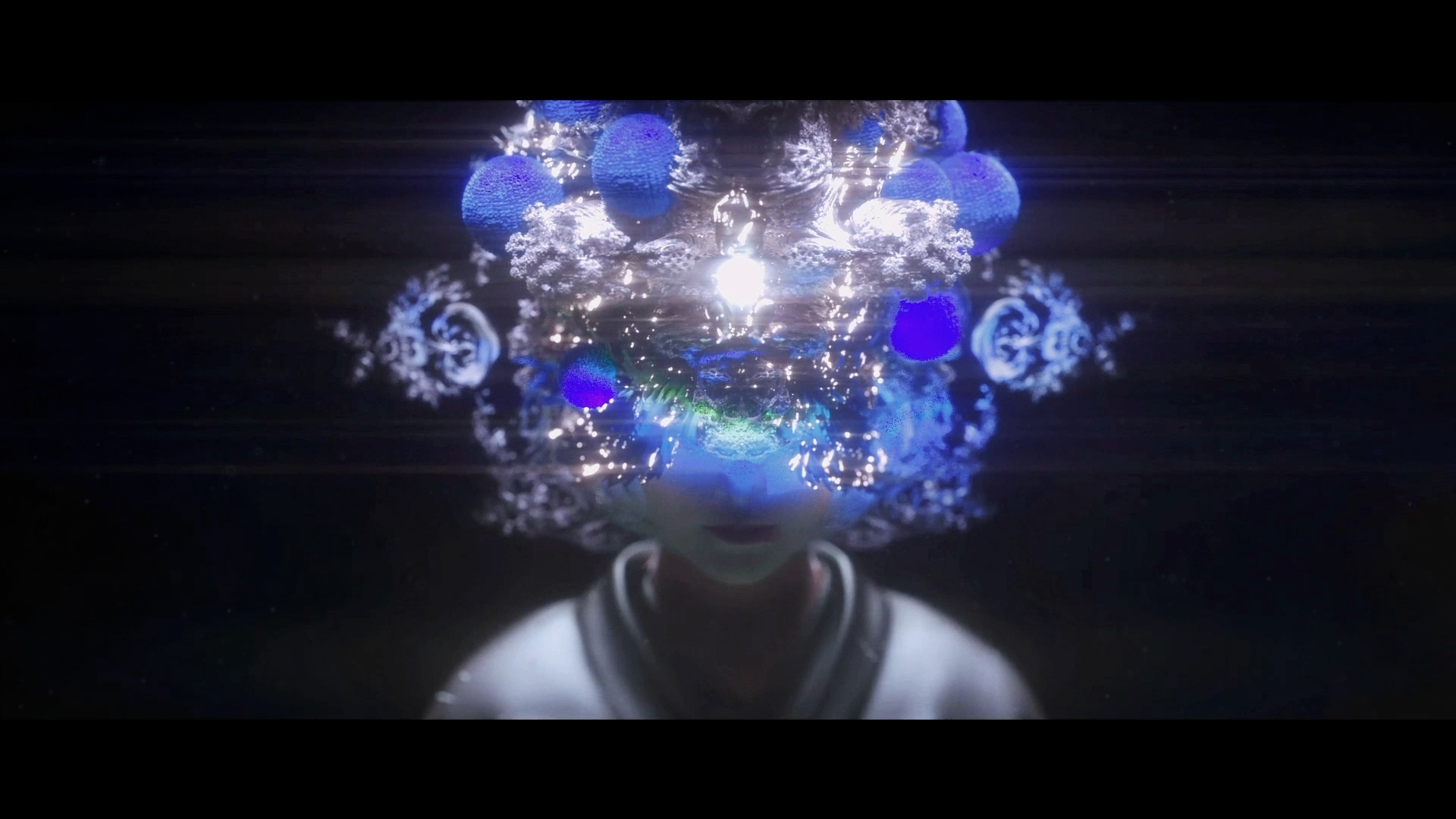
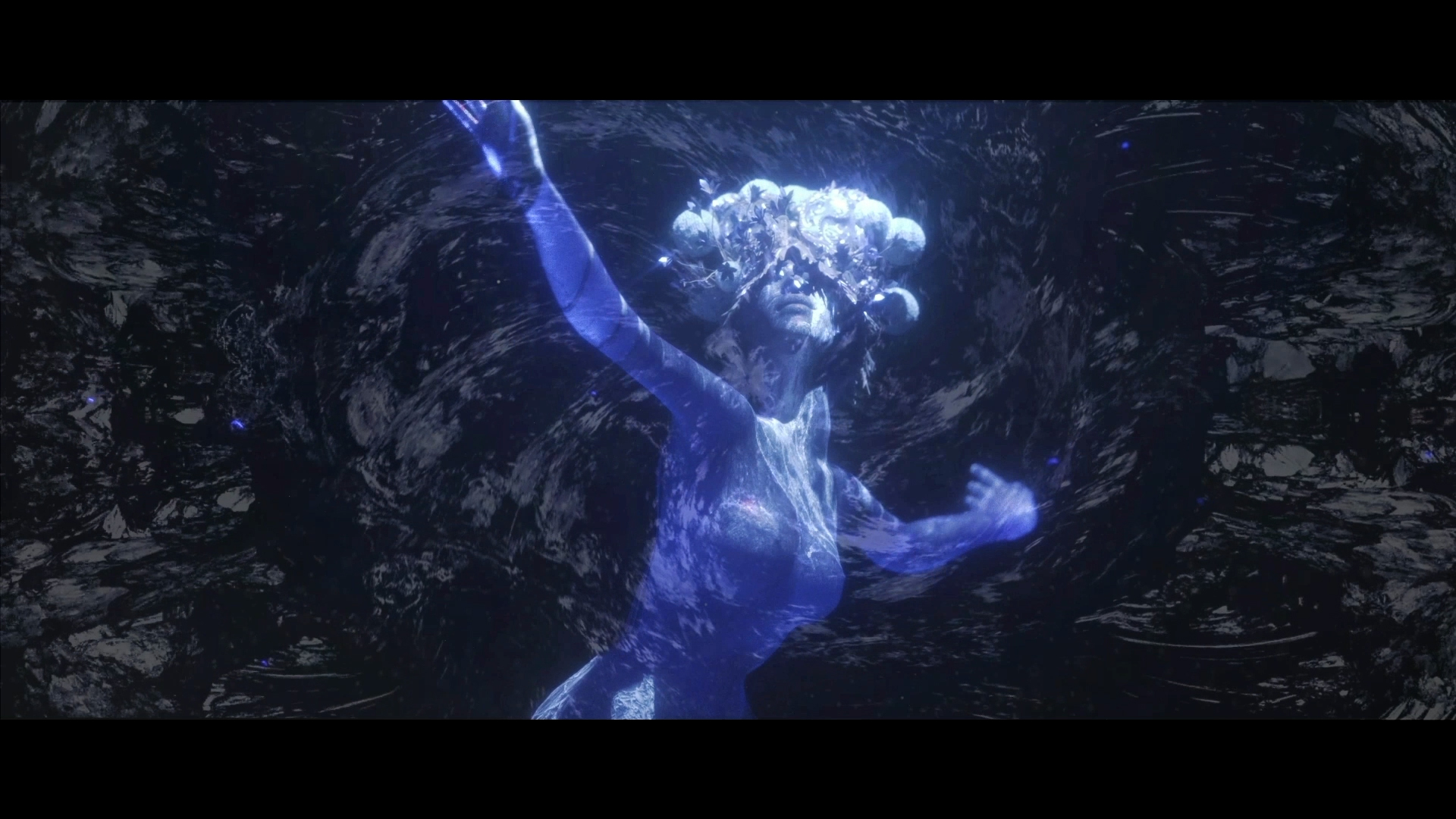
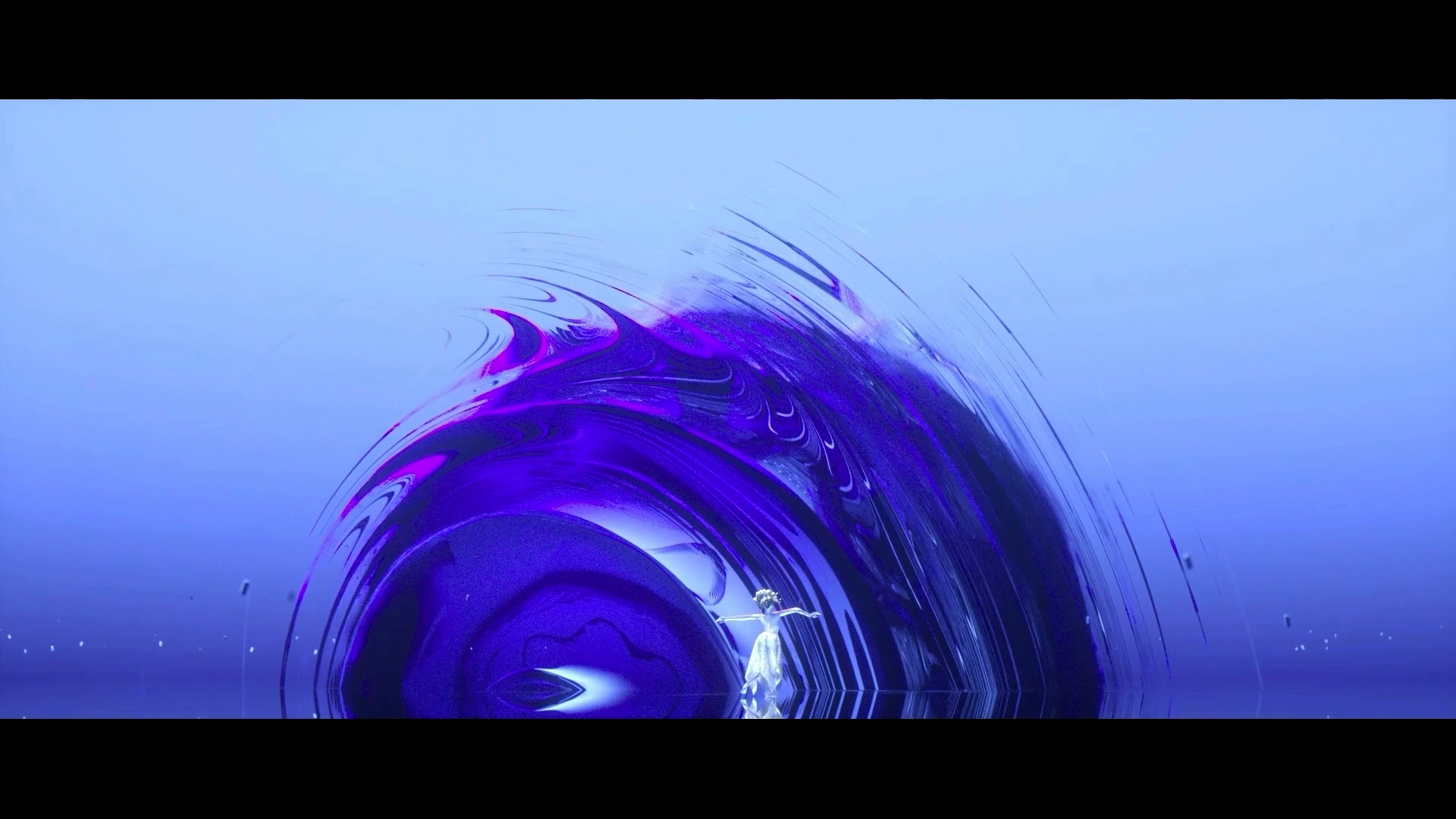
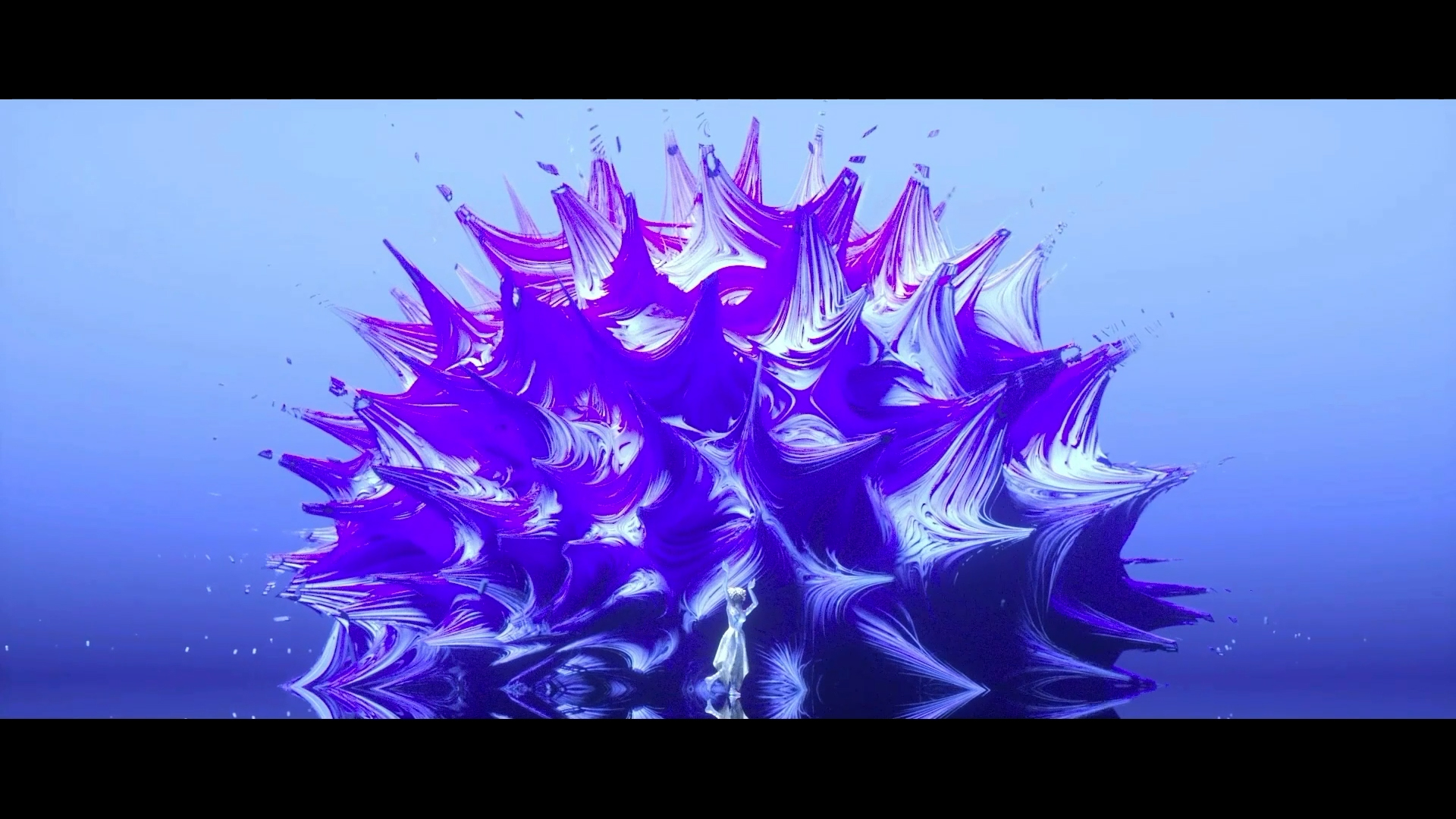
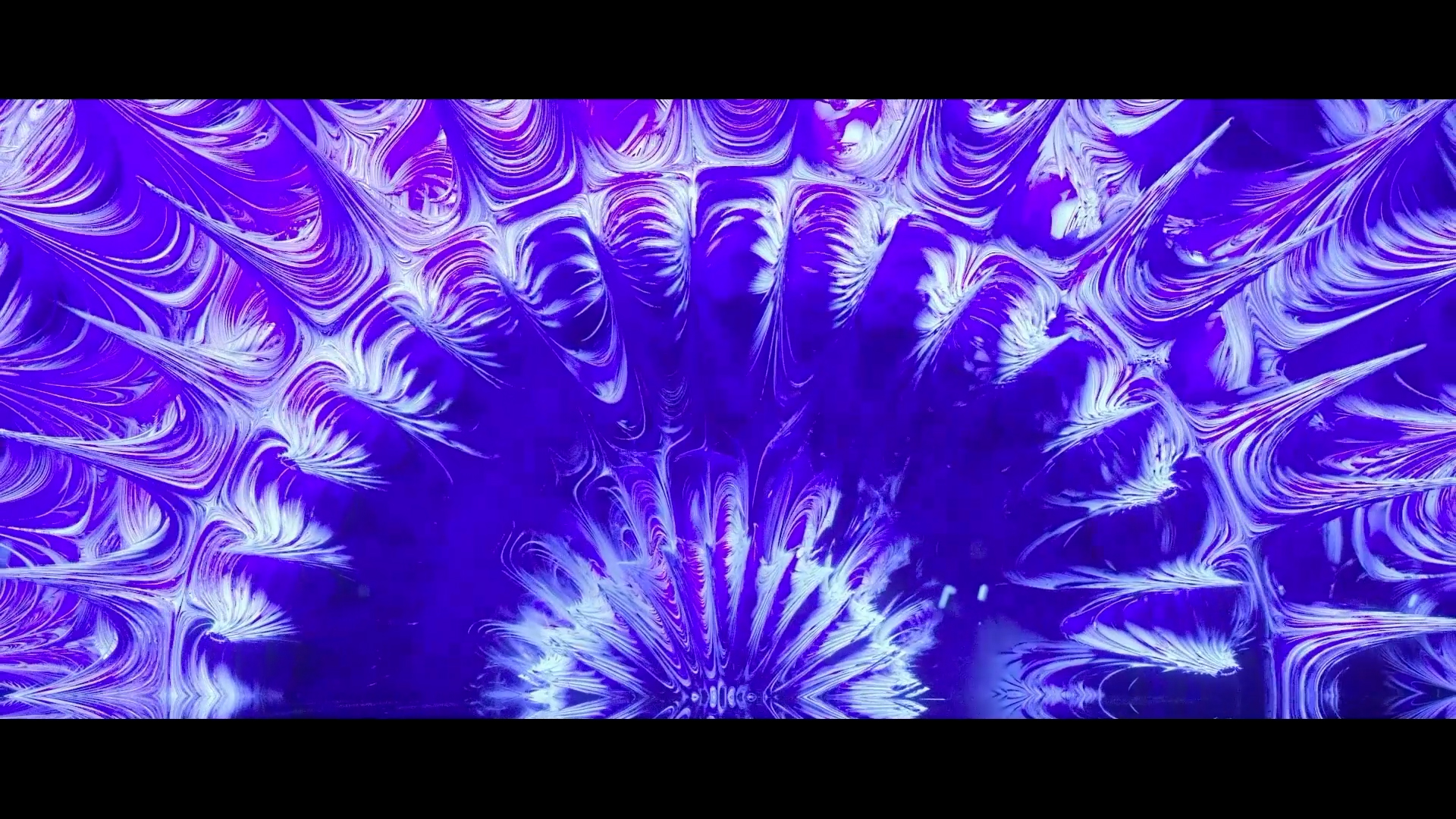
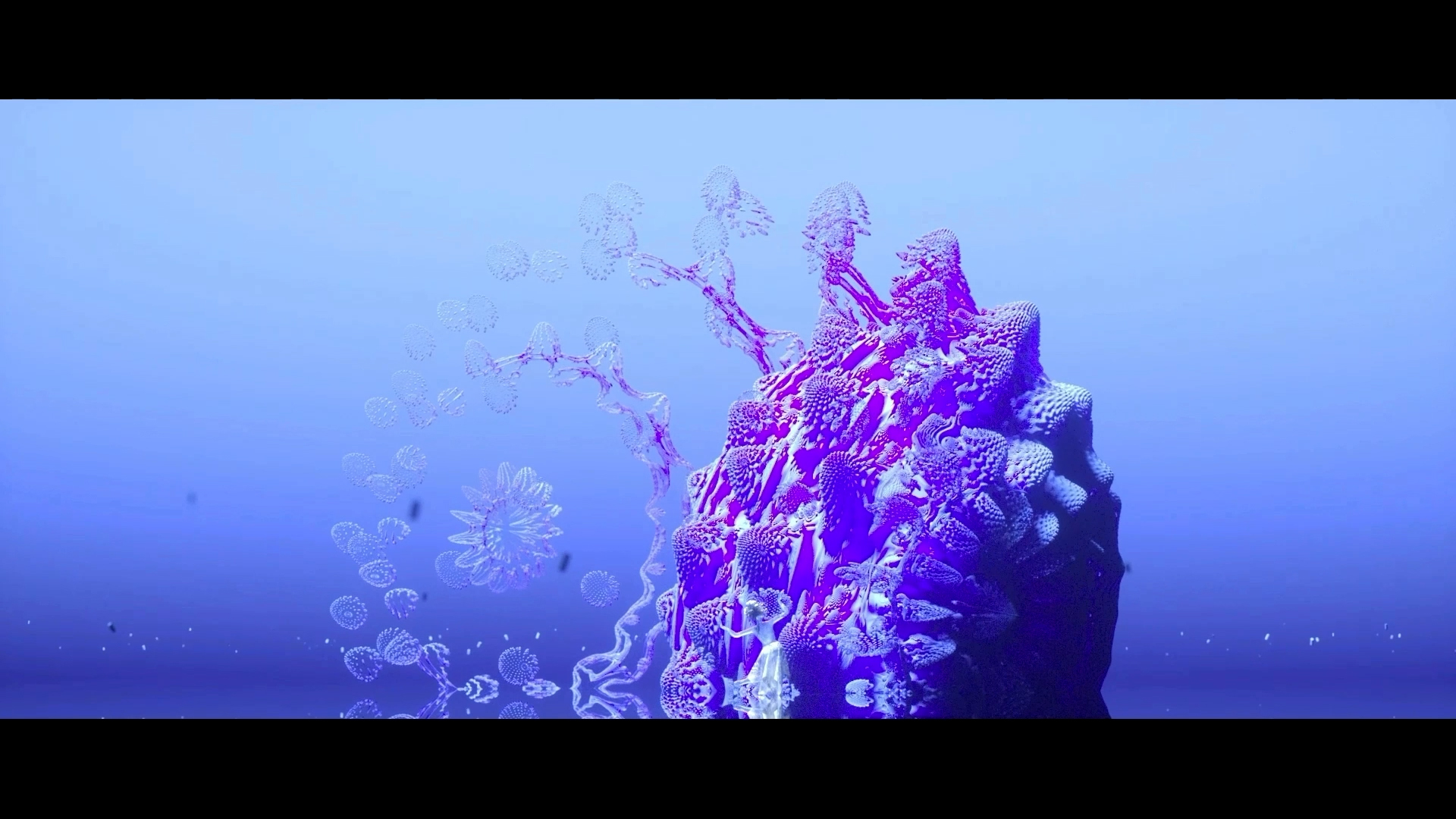
BLUE&BANLANCE

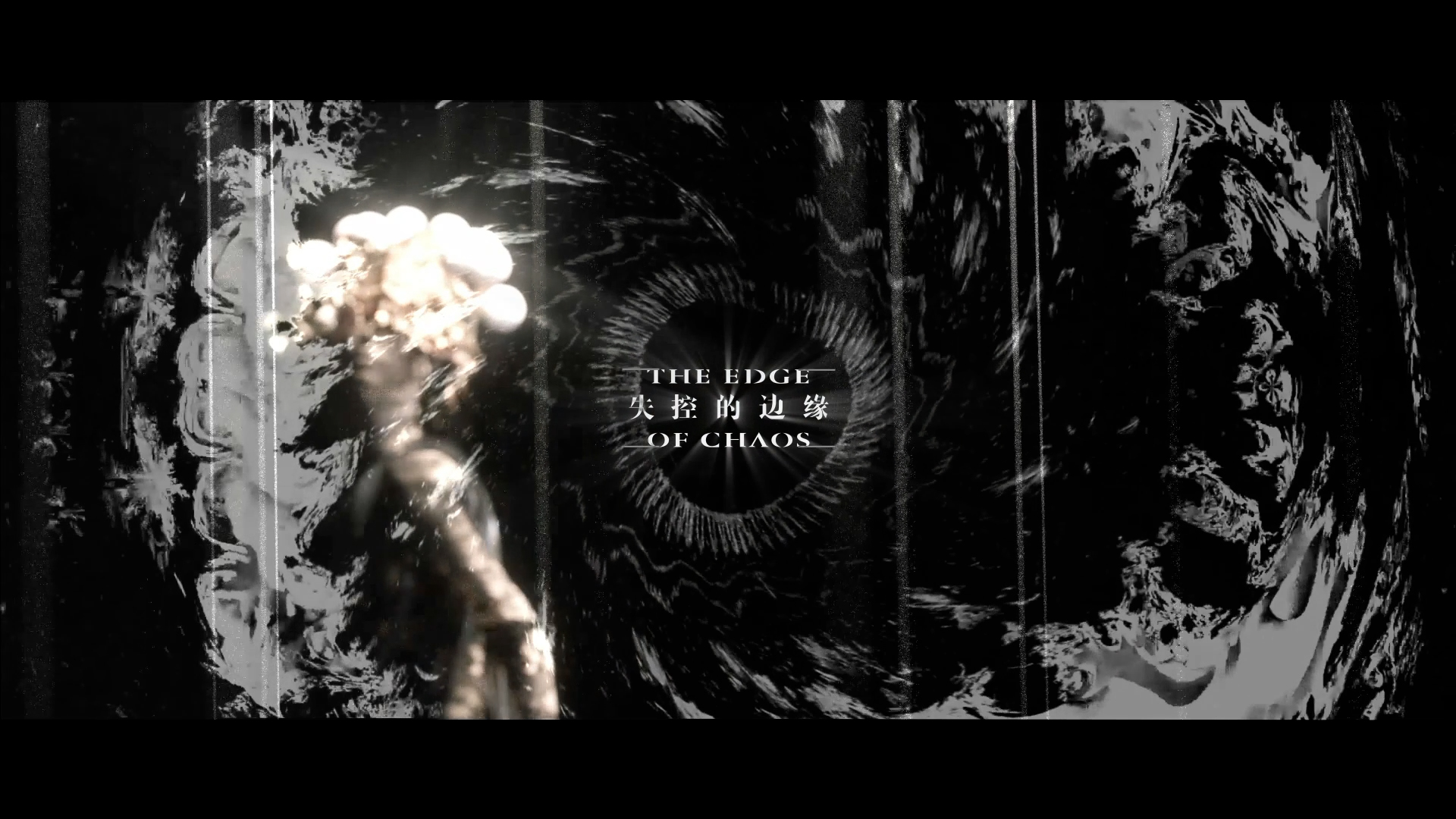
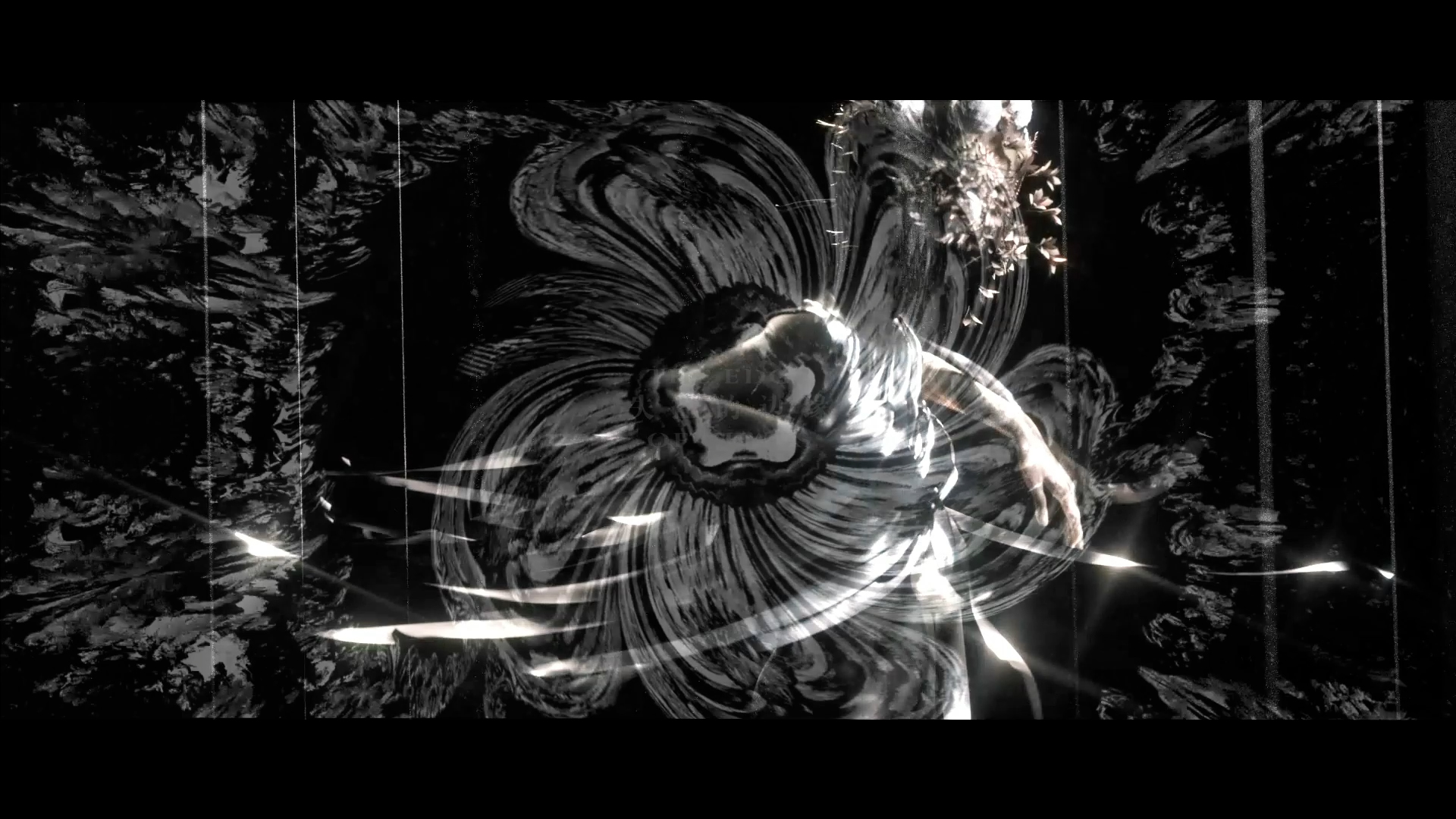
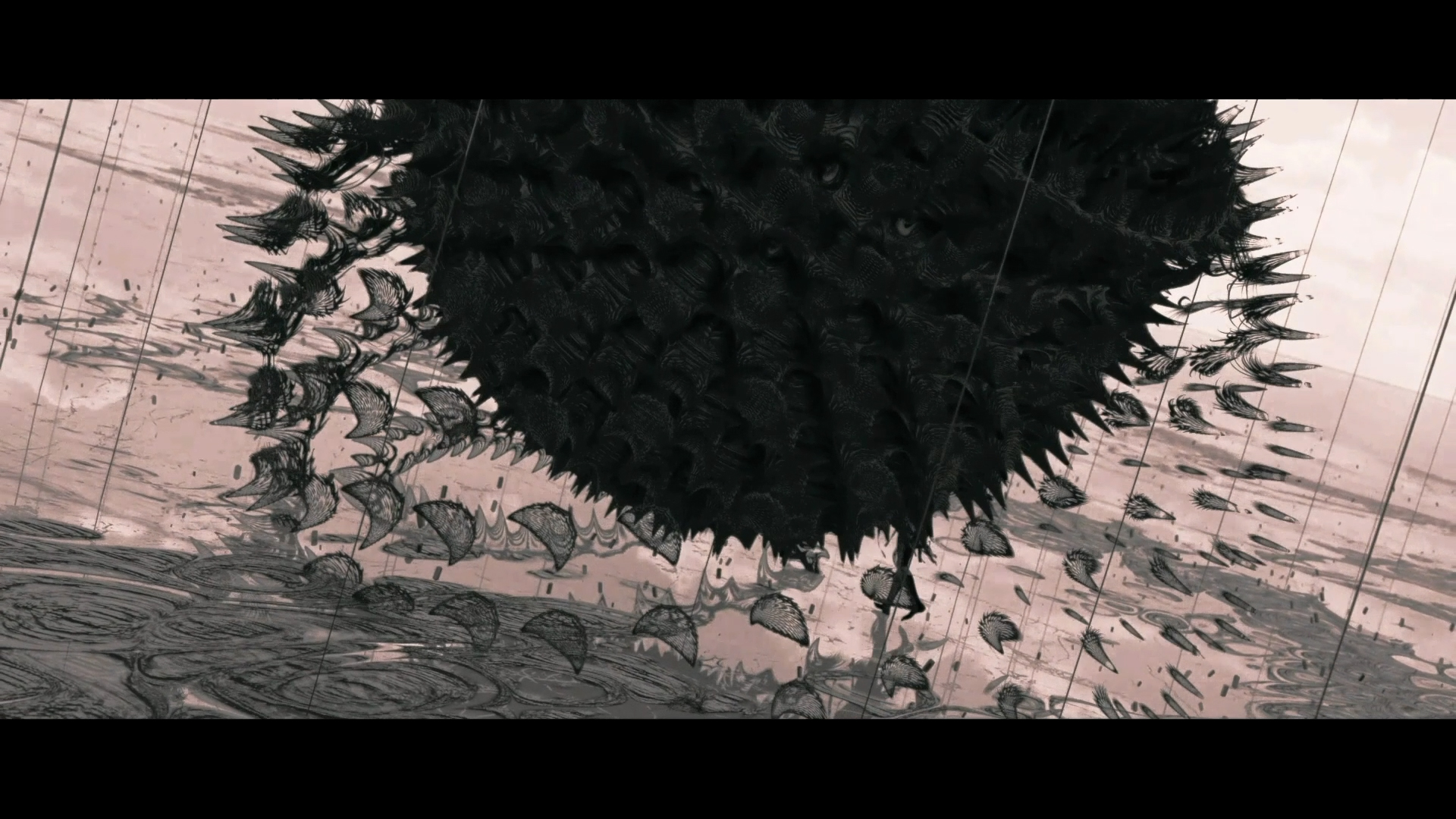
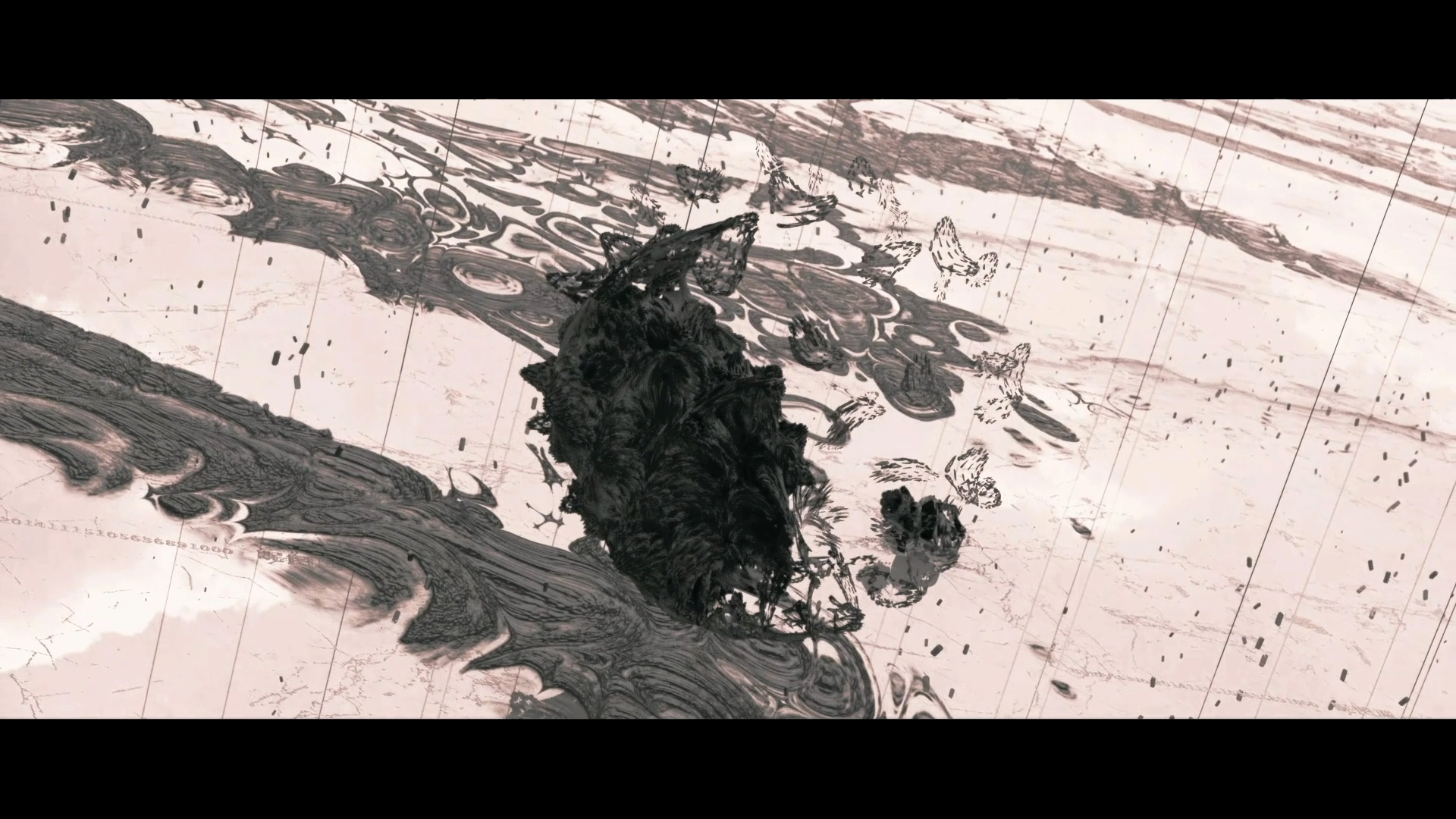
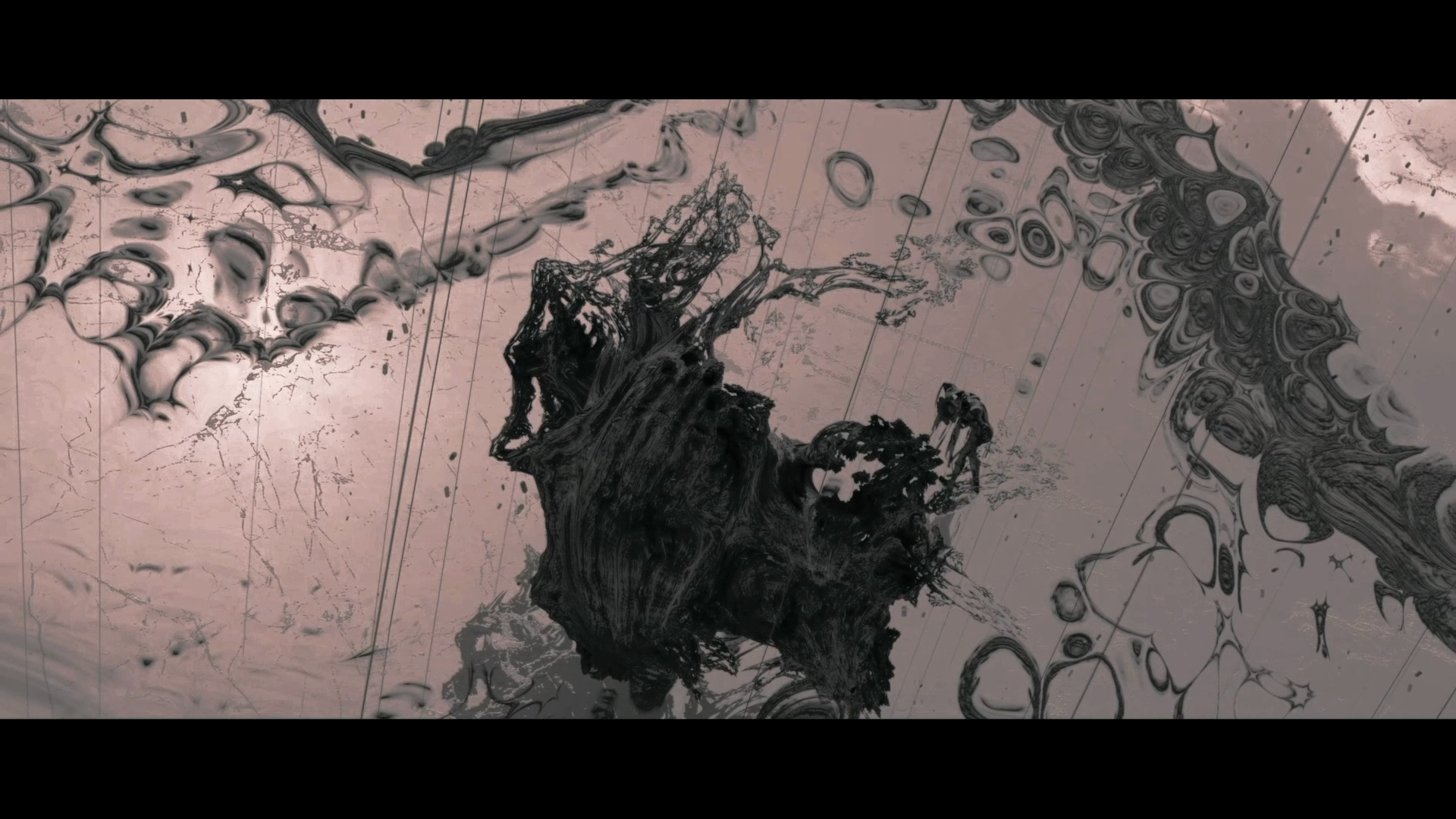
WHITE&MISTERY

For this work, I chose one of the most magnificent fractal shapes, the Mandelbrot Set, and varied the set’s basic shape by changing the parameters in the code. I divided these variations into three general categories:
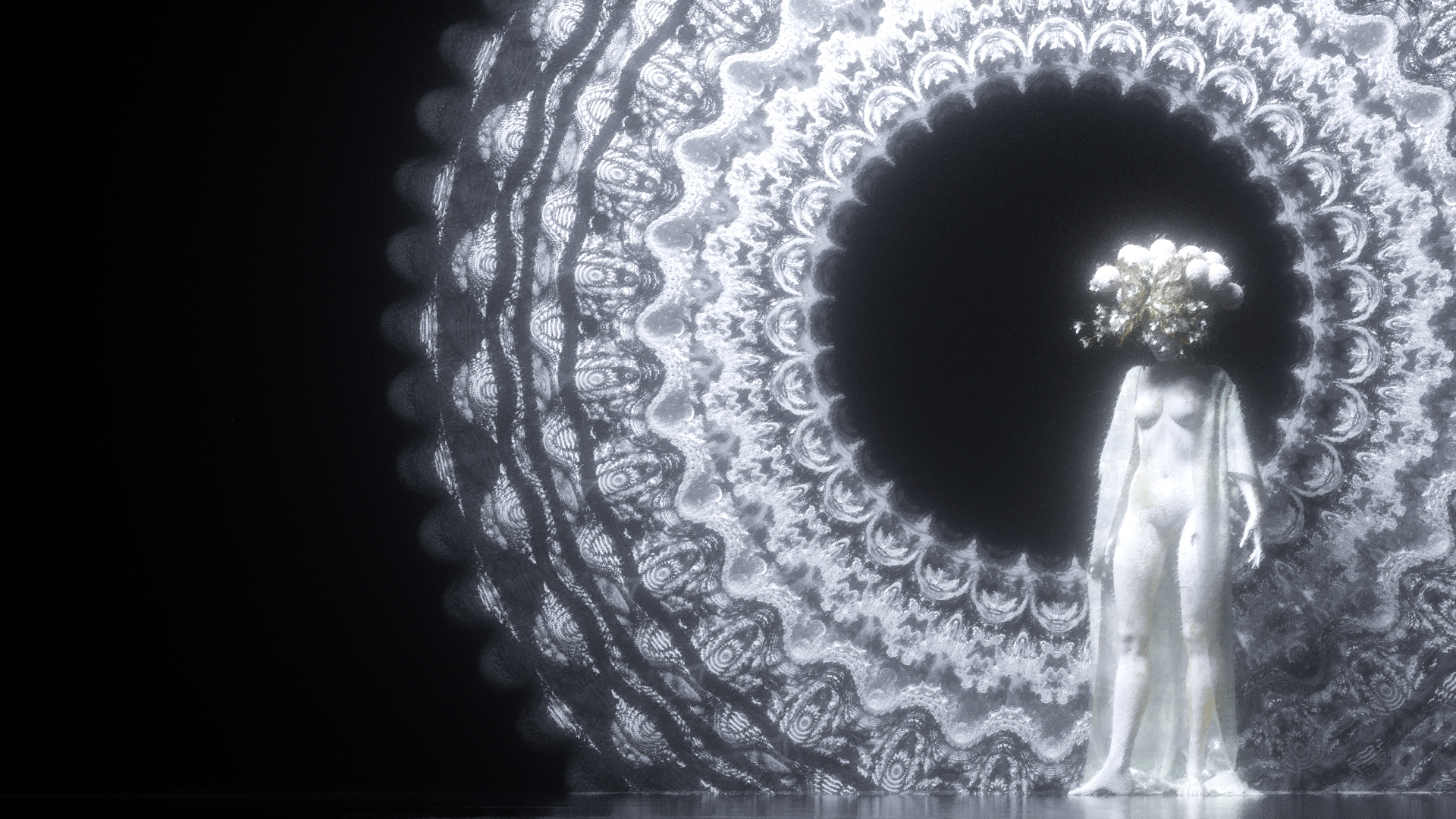
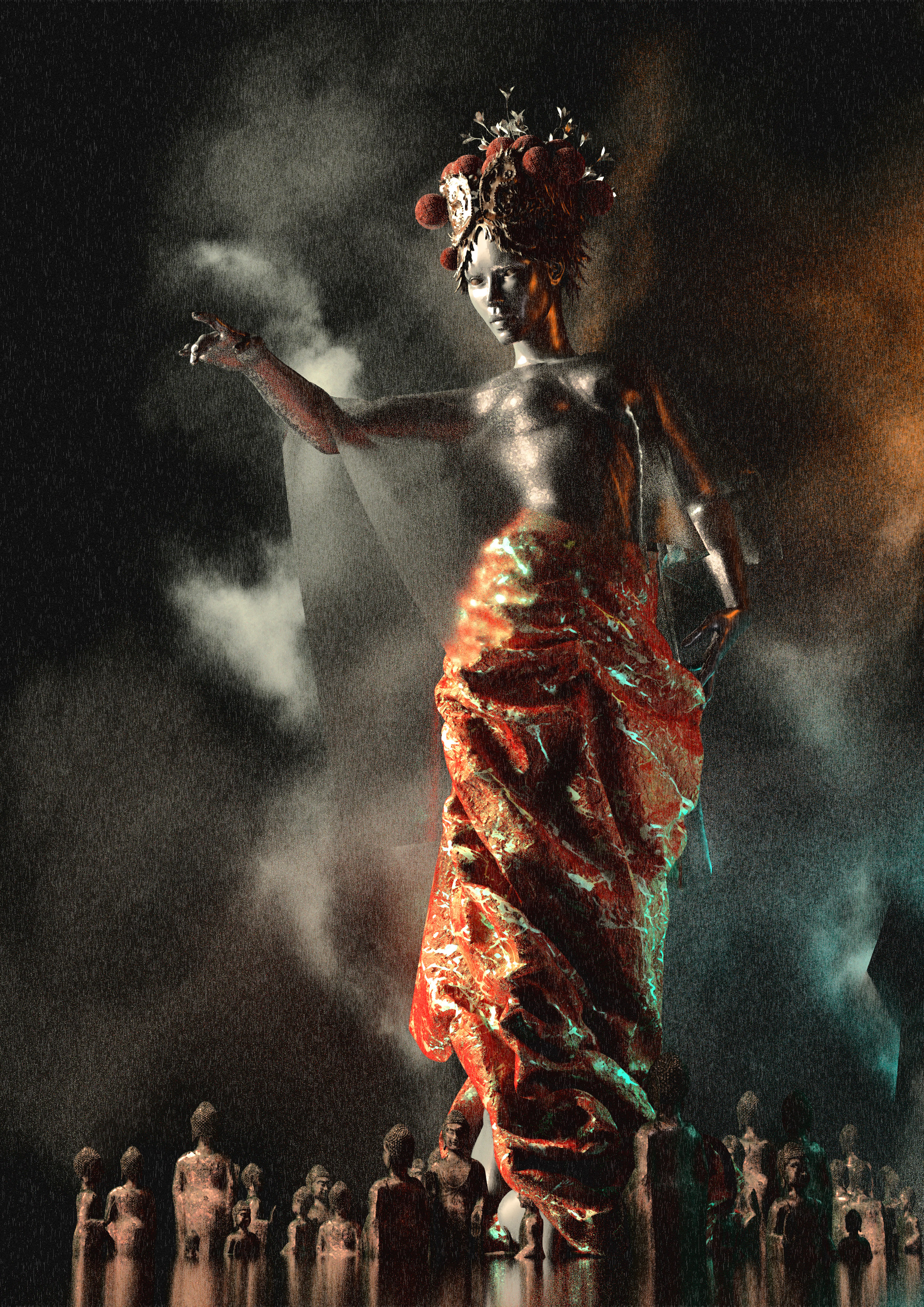


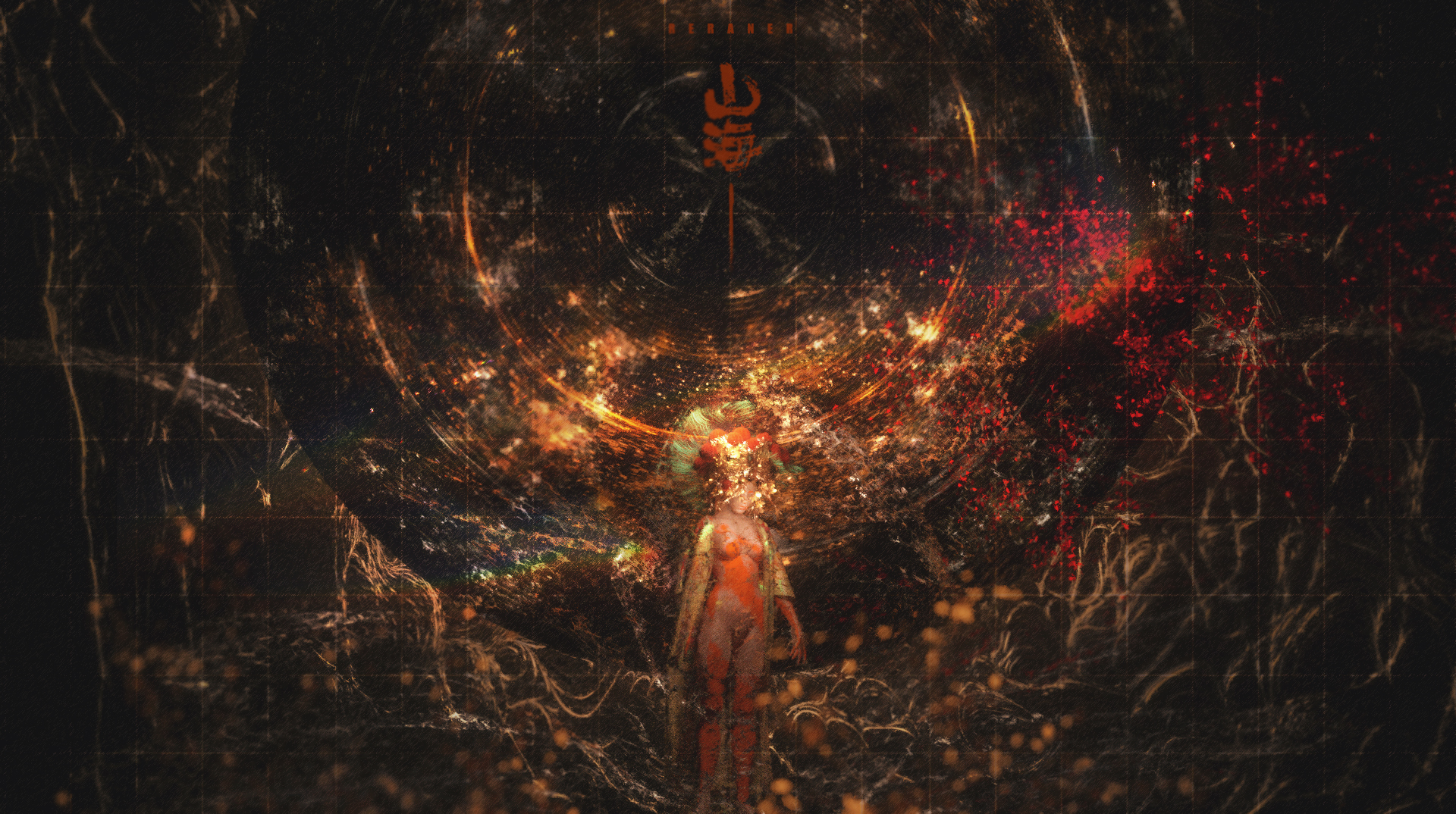





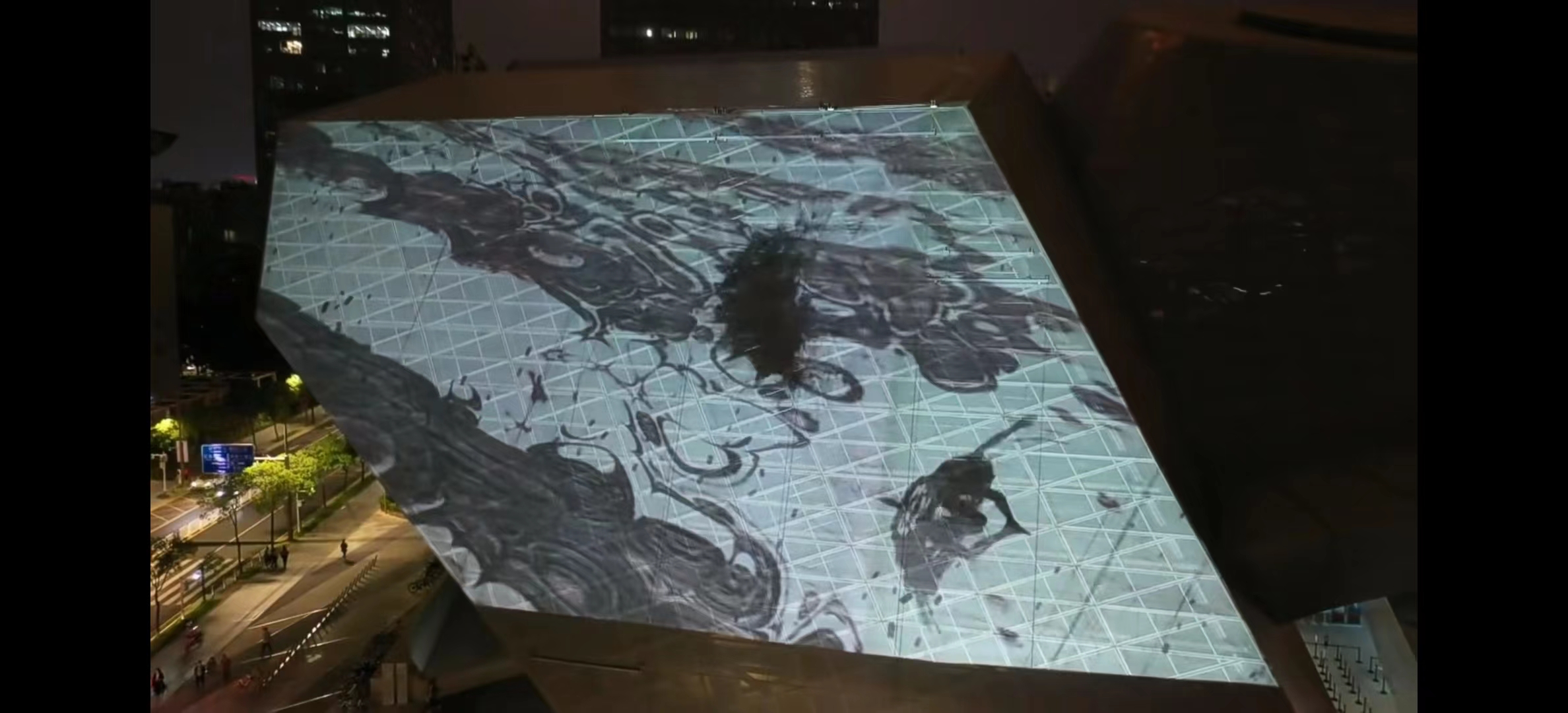


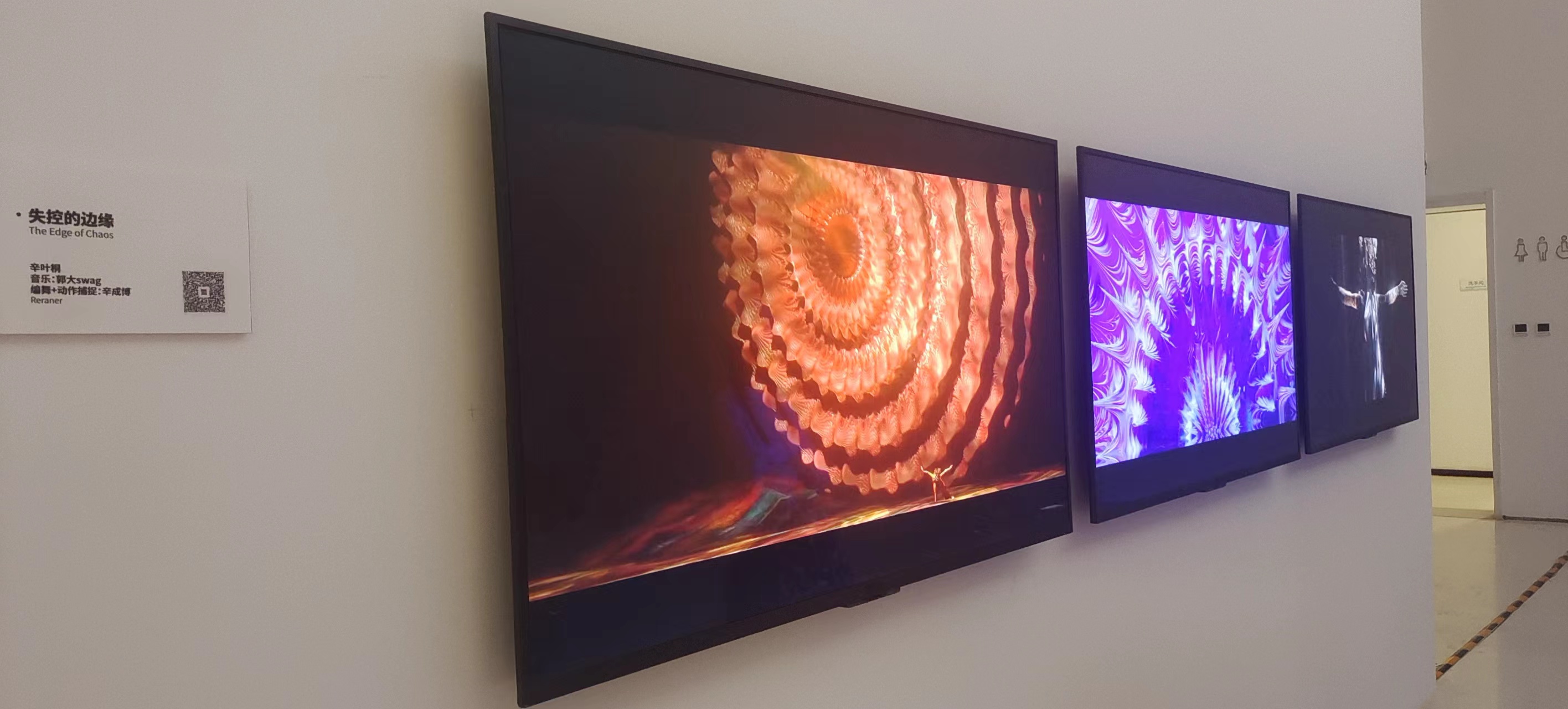
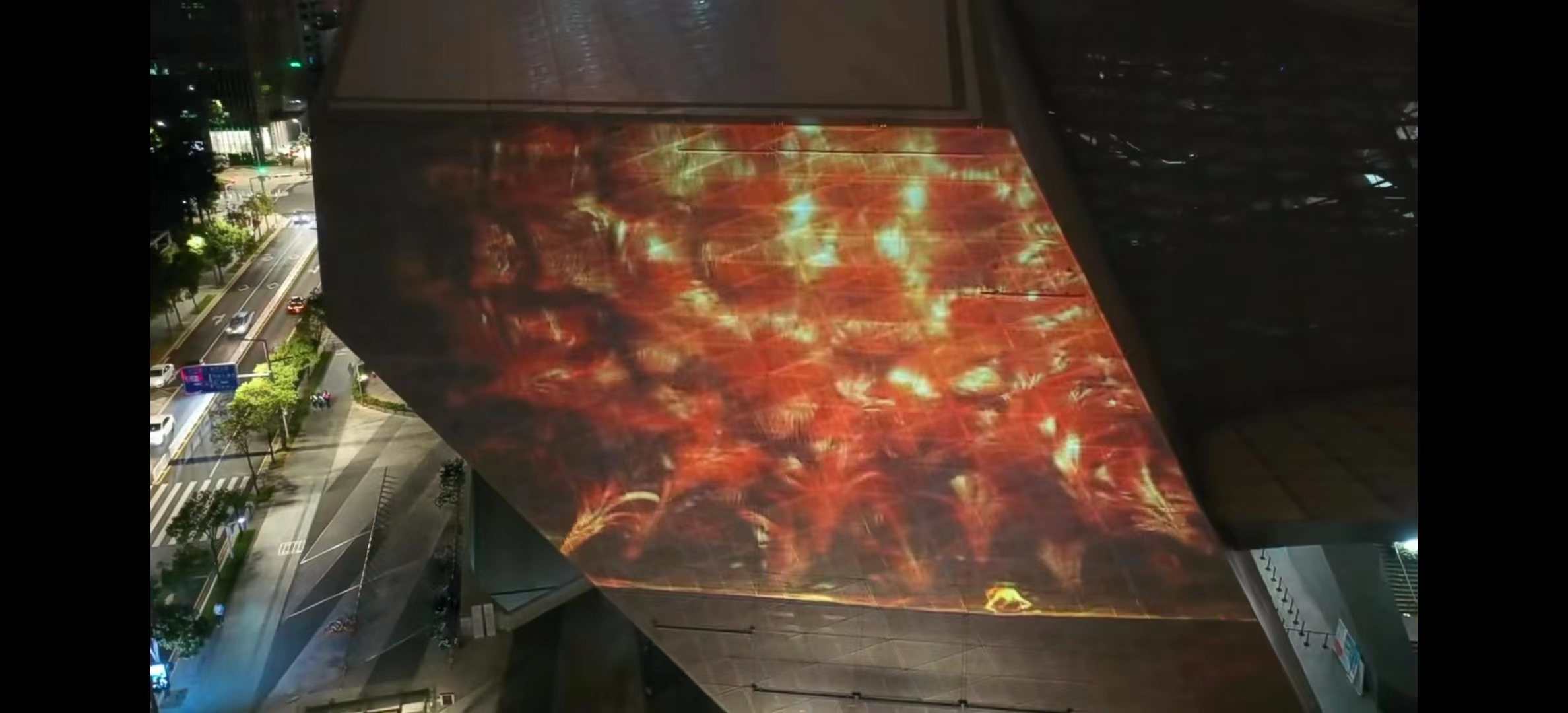
MADE BY:
Yetong Xin
MUSIC:
Guo Da Swag
DANCER:
Chengbo Xin
INSTRUCTOR:
Quan Ma | Lei Chen
Yetong Xin
MUSIC:
Guo Da Swag
DANCER:
Chengbo Xin
INSTRUCTOR:
Quan Ma | Lei Chen